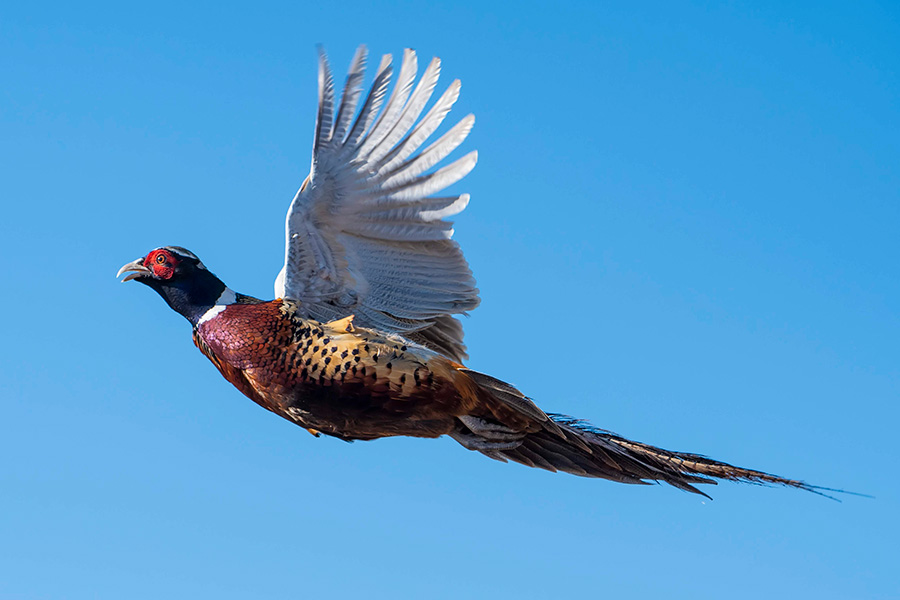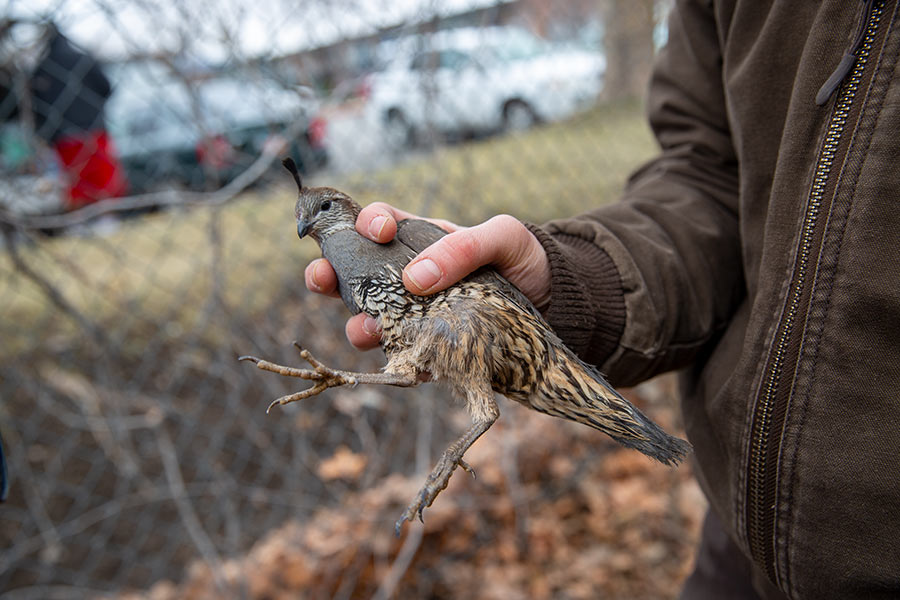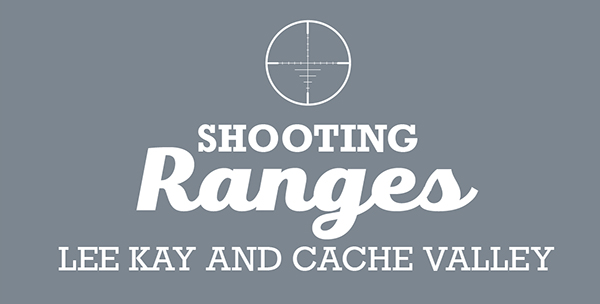What hunters should expect during the 2020 pheasant and quail hunts
Salt Lake City — Many upland game and waterfowl hunts are already underway across Utah. The general-season pheasant and quail hunts open Nov. 7. If you are planning to target either of these birds this fall, here is what you should know.
Pheasant (ring-necked)
Utah's general pheasant hunting season runs from Nov. 7 to Dec. 6.
The number of pheasants and where they can be found will depend on where you are hunting in Utah. Northern Utah saw an average brood production, and hunting success should be about the same as last year. The majority of pheasants can be located on private land in the eastern portion of Box Elder County. In central Utah, pheasants can be located primarily around Utah Lake, in particular at the Powell Slough WMA and on the Utah Lake Wetland Preserve.
The wild pheasant population is relatively limited in the southeastern part of the state, and hunting conditions will be similar to last year. Most of the pheasants in this part of the state will be found near irrigated fields on private lands. Popular pheasant hunting areas include the Green River Valley near the town of Green River, the Miller Creek area of Carbon and Emery counties, as well as in Huntington, Straight and Ferron canyons.
In southern Utah, hunters can find some wild pheasants in Sevier and Piute counties. The hunting is expected to be fair in those areas, and most of the birds are located on private property. Hunters should remember that written permission from landowners is required to hunt on any private lands.
"Hunters should also target the DWR wildlife management areas located throughout the state because we will be releasing about 12,000 pen-reared rooster pheasants in these areas," Heather Talley, Utah Division of Wildlife Resources upland game coordinator, said. "Birds will be released each week throughout November to help increase hunter success and give everyone a good opportunity to harvest birds this season."
Visit the DWR website to see where pheasants will be released throughout the season. (Many of the locations include WMAs and walk-in access areas — which is an area of private land on which the DWR has leased certain hunting, trapping or fishing privileges.) For a full list of WMAs that can be hunted for upland game and which seasons they are open for, visit the 2020–21 Utah Upland Game and Turkey Guidebook. To locate a walk-in access area near you, visit the DWR website.
In general, pheasants like areas with nearby fields of wheat or corn that provide feed for them. Pheasants also prefer habitat with stemmed grass that provides nesting cover, as well as areas with dense woods or wetlands with thick cattails that provide shelter during the snowy winter months. These birds are good at hiding in brush, so hunting with a well-trained dog will increase your chances of success.
"If you don't have a dog, you can still be successful by walking slowly to flush out the pheasants," Talley said. "Many times, they will flush if you stand near them for a few minutes because they think that they've been spotted."
Walking along ditch banks or fence lines is also a good hunting strategy. Pheasants typically prefer to run rather than fly away, so if you walk along these areas, you are more likely to drive them out into the open, where they will flush.
"If you do choose to hunt on one of our WMAs, be willing to hike a long way away from parking areas and other hunters to increase your chances of finding the wild birds," Talley said.
Hunters should also remember that several of the WMAs require non-toxic shot (for example, steel shot) when hunting. Lead shot may not be used. For more information about the pheasant hunts, visit the DWR website.
Quail (California and Gambel's)
Utah's general quail hunting season runs from Nov. 7 to Dec. 31.
Hunting quail also differs in each area of the state. In northeastern Utah, much of the quail habitat is on private land, so make sure to obtain written permission from the landowner prior to hunting. In central Utah, the highest concentrations of California quail are in urban areas, which limits most hunting opportunities.
In southeastern Utah, the brood production of California quail was very good for the second consecutive year. Wet conditions last winter helped produce an abundant food source this spring and summer. Quail are not widespread in southeastern Utah, but there are localized populations near farmlands along the Colorado and Green rivers, as well as in lower Huntington Canyon and along the Price River.
Quail numbers are fairly low in much of southern Utah, but their populations are improving in Kane and Garfield counties, and they can be located south and east of Kanab, along the Arizona state line. The Gambel's quail numbers in Washington County are slightly up from last year. Hunters should look for quail in the brushy washes of western Washington County.
California and Gambel's quail are hunted using similar methods — just in different habitats. When hunting Gambel's quail, look for Joshua trees, dry washes, and draws with black brush or desert almond. California quail will occupy washes containing water and brushy cover, and will eat flowers from grasses, trees and shrubs, as well as seeds and leaves.
"It's best to hunt quail with a trained hunting dog, since quail would rather hunker down and hide than fly away," Talley said. "Holding the quail in place with a dog will enable you to get close enough to flush the birds and get a shot. If you don't have a dog, you can still hunt quail successfully. If you get close enough to running quail before they fly, you can still get a good shot."
Youth hunts
The statewide youth pheasant hunt will take place from Oct. 31 to Nov. 5, and pheasants will be released just before the hunt. The statewide youth quail hunt will take place from Oct. 31 to Nov. 2. If you were 17 years of age or younger on July 31, and you've completed Hunter Education, you can participate in the hunt. If you haven't yet finished Hunter Education — and you're at least 12 years old — you still might be able to participate through Utah's Trial Hunting program. You must also have a hunting license and follow all of the state's upland game hunting rules.
Upland Game Slam
To add an extra challenge to your hunts this fall, consider participating in the Upland Game Slam. Similar to the Utah Cutthroat Slam, it encourages hunters to harvest a variety of upland game species, while generating money to help fund a variety of habitat and upland game-related projects.
Hunters complete a slam by harvesting the required amount of the target species. Each slam is designed to give you an extra challenge while you're hunting, as well as the opportunity to earn a commemorative, collectible coin. The entry fee is $20 for hunters 18 years of age or older, or $10 for hunters 17 years of age or younger. Learn more about how to participate in the Upland Game Slam on the DWR website.
A new, eighth slam has been added this year. The "Appetizer Slam" includes some of Utah's smaller game birds, including California quail, Gambel's quail and mourning dove. To complete the slam, hunters must harvest one of each of the three species within a single hunting season.
Check the 2020–21 Upland Game and Turkey Guidebook for details on regulations for hunting each species, including the legal weapons for each upland game species.


















